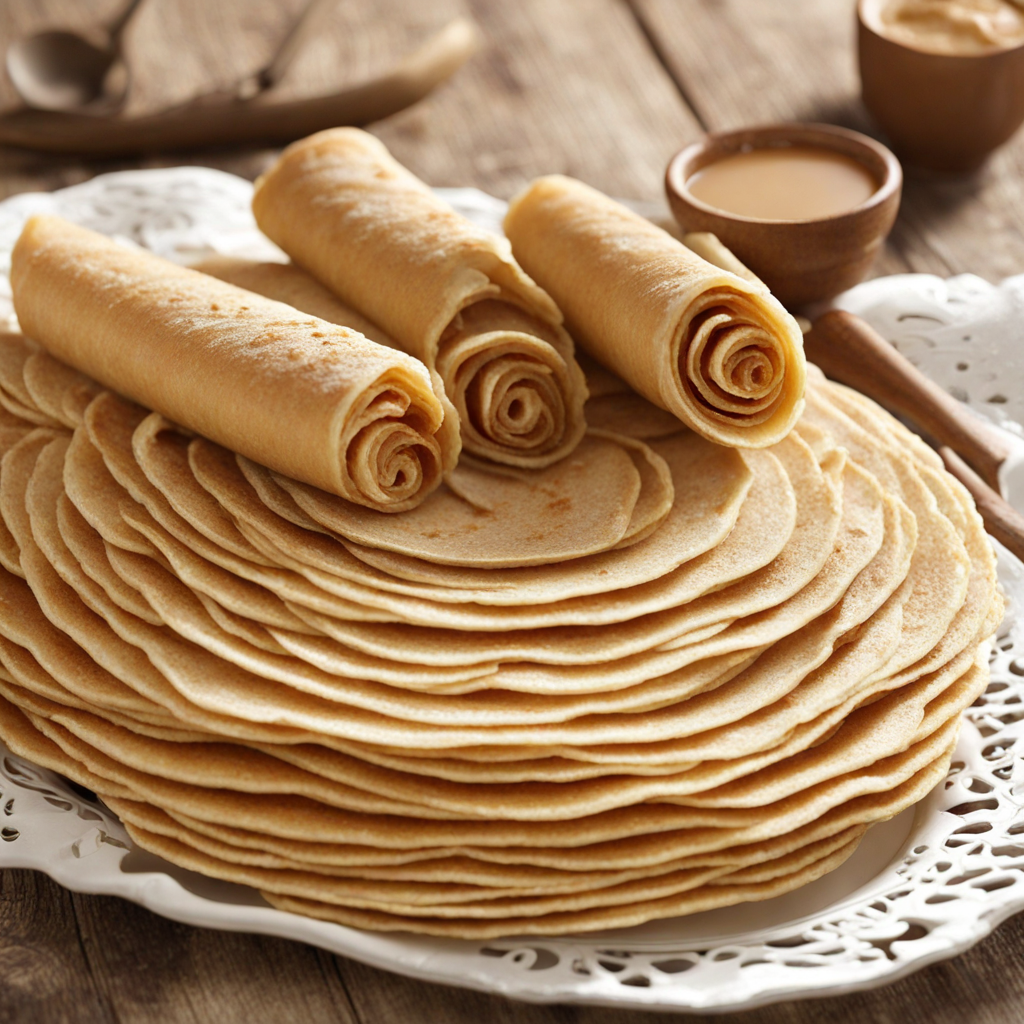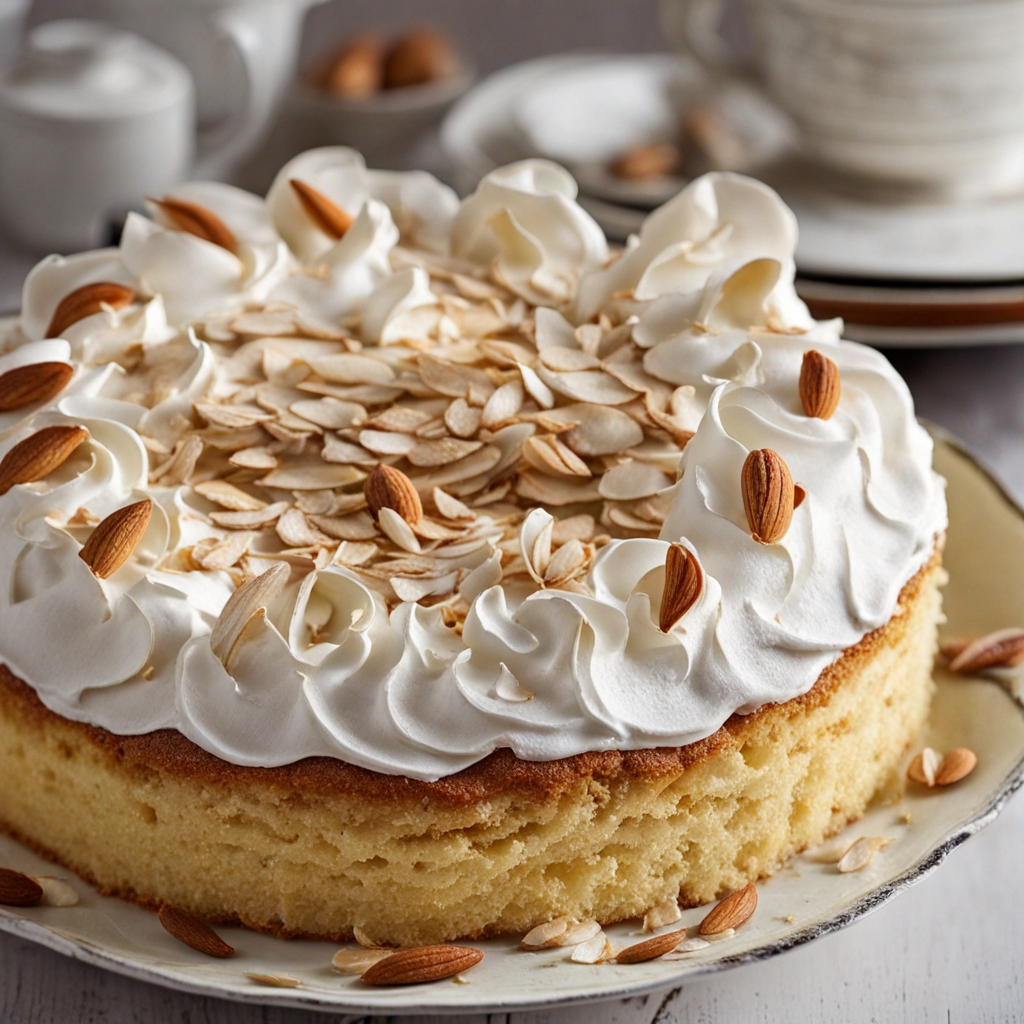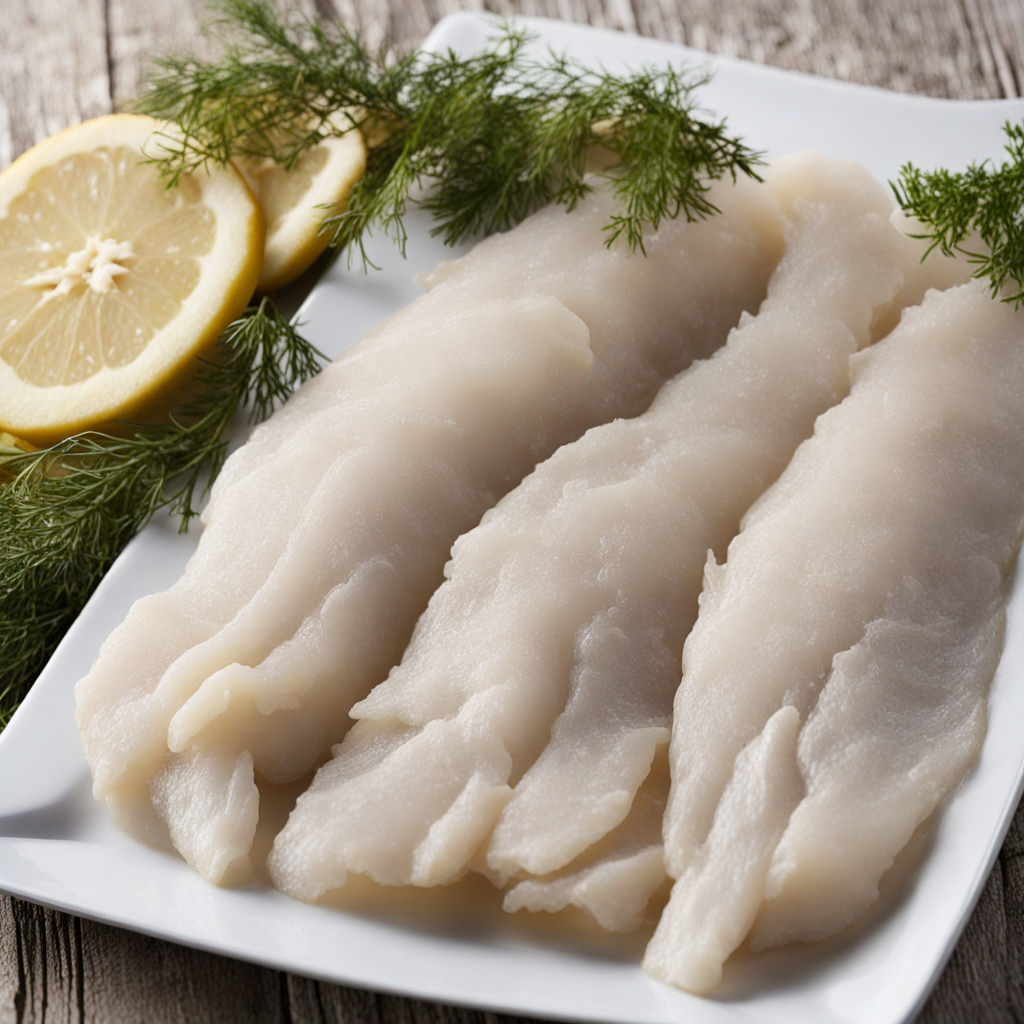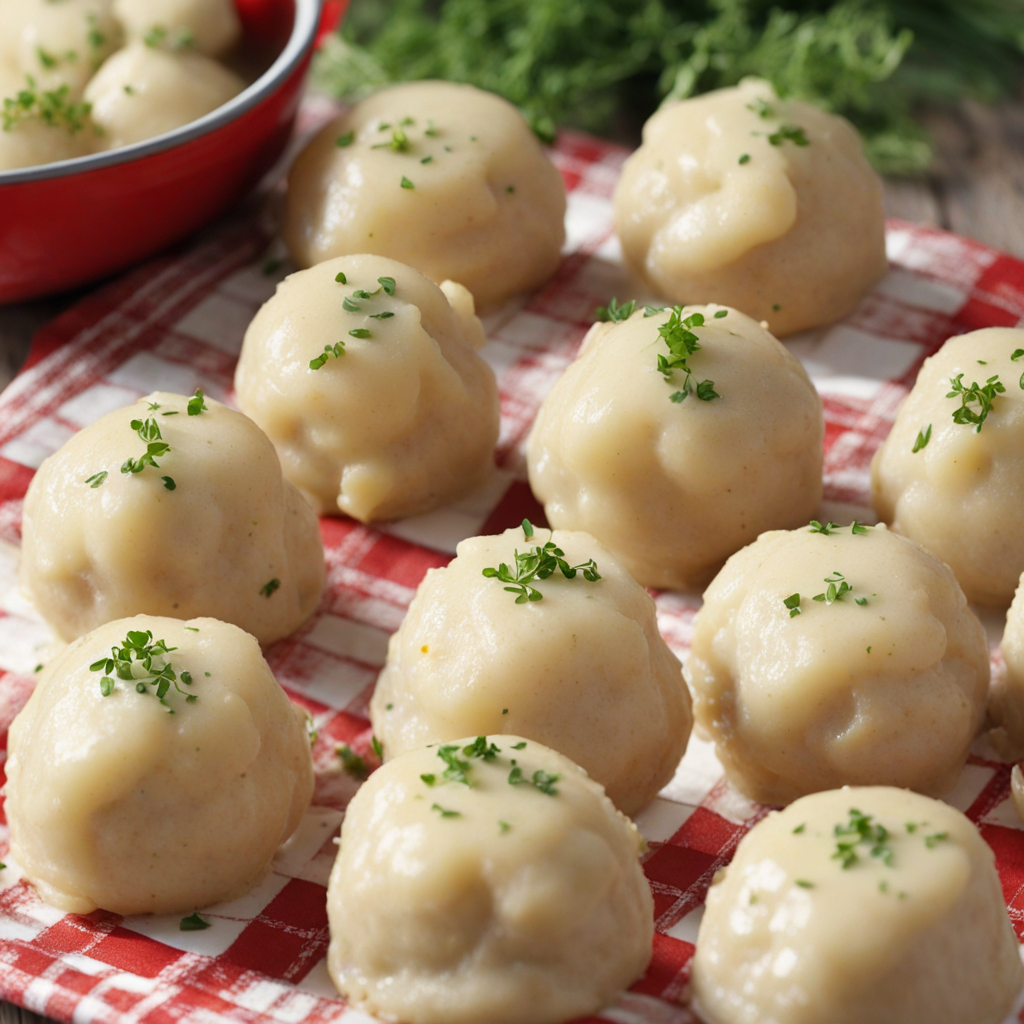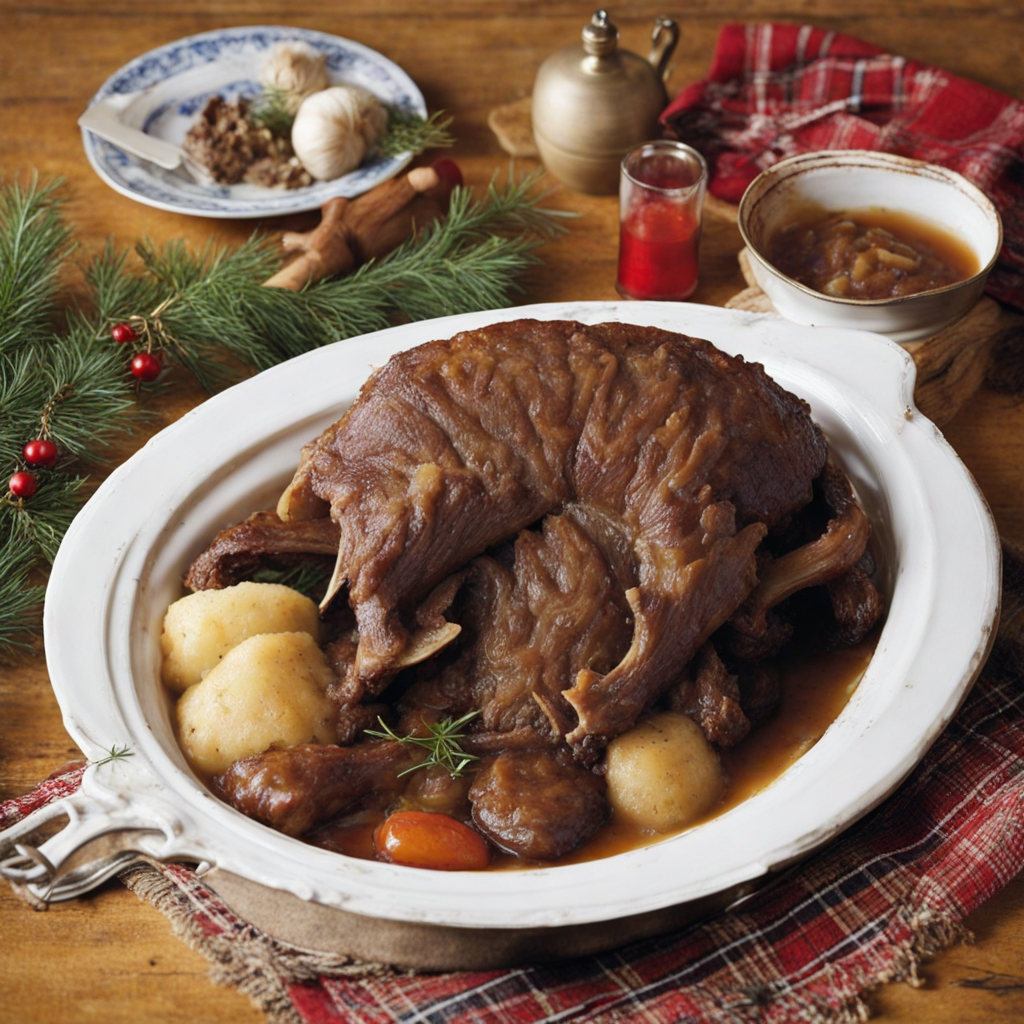Krumkake
Krumkake is a traditional Norwegian dessert that beautifully marries texture and flavor in a delicate, crisp cone shape. Made primarily from a simple batter of flour, sugar, eggs, and cream, the dough is poured onto a specially designed iron griddle, which resembles a waffle maker but creates intricate patterns. As the batter cooks, it transforms into a thin, lace-like cake that is both light and airy, providing an exquisite crunch that is a delight to the palate. The golden-brown hue and delicate design give Krumkake an elegant appearance, making it a perfect treat for festive occasions and gatherings.
How It Became This Dish
Krumkake: A Sweet Legacy from Norway Krumkake, a delicate and crispy Norwegian dessert, is a testament to the rich culinary heritage of Norway. These intricate cookies, whose name translates to “bent cake,” are traditionally made from a simple batter of flour, sugar, eggs, and cream. They are cooked in a specialized iron griddle, known as a krumkake iron, which imprints a beautiful lace-like pattern onto the cookies. While Krumkake may seem like a straightforward treat, its history is layered and reflects the cultural significance of food in Norwegian society. Origins The origins of Krumkake can be traced back to the 16th century, a period marked by significant culinary evolution in Europe. The tradition of using iron molds to create cookies was not unique to Norway; similar practices were found across Europe, particularly in countries like Italy and Germany, where waffle-like cookies were popular. However, Krumkake is distinctively Norwegian, characterized by its unique shape and decorative patterns. The first written recipes for Krumkake began to appear in Norwegian cookbooks in the late 19th century, particularly during the time of national romanticism when Norway was defining its national identity. The tradition of making Krumkake was often passed down through generations, becoming a beloved family recipe, especially during festive occasions. The cookie's light and airy texture made it a perfect companion to coffee, a staple in Norwegian culture. Cultural Significance Krumkake holds a special place in Norwegian celebrations and rituals. Traditionally, it is associated with Christmas festivities, where families would gather to prepare and share the sweet treat. The making of Krumkake is often a communal activity, involving the entire family, from young children to grandparents. This aspect of preparation underscores the importance of food as a medium for bonding and storytelling within families. The cookie's unique shape—conical and often filled with whipped cream or other sweet fillings—symbolizes hospitality and warmth. In Norway, serving Krumkake to guests is a gesture of generosity, and it is often accompanied by coffee, reinforcing the cozy and inviting atmosphere that is central to Norwegian culture. Moreover, Krumkake is not only enjoyed during Christmas; it has become a staple at weddings, birthdays, and other celebratory events. As Norwegian emigrants settled in various parts of the world, especially in the United States during the late 19th and early 20th centuries, they carried their culinary traditions with them, including the making of Krumkake. This migration led to the establishment of Norwegian-American communities, where Krumkake became a cherished element of their cultural identity, bringing a taste of home to their new surroundings. Development Over Time As Norway entered the 20th century, Krumkake continued to evolve. The introduction of new kitchen appliances and gadgets made the preparation of Krumkake more accessible to a broader audience. Electric Krumkake irons became widely available, allowing for a more consistent cooking process and reducing the time and effort involved in making these intricate cookies. The post-World War II era saw a renewed interest in traditional Norwegian foods, as many Norwegians sought to reconnect with their heritage. Krumkake was celebrated not only for its taste but also for its aesthetic appeal. The intricate designs created by the molds became a form of artistic expression, with bakers experimenting with various patterns and shapes, including seasonal motifs and personalized designs. In contemporary Norway, Krumkake is often featured in culinary competitions and festivals, highlighting its enduring popularity. The cookie has also found its way into modern cuisine, with chefs experimenting with innovative fillings and flavor combinations, such as fruit compotes, chocolate, and even savory versions. This adaptability showcases the versatility of Krumkake, allowing it to transcend traditional boundaries while remaining rooted in its cultural significance. Krumkake in Modern Times Today, Krumkake is enjoyed not only in Norway but around the globe, particularly in regions with significant Norwegian immigrant populations. In the United States, for example, Krumkake is a popular dessert during holiday gatherings, and many families have their own cherished recipes that reflect their unique family traditions. Bakeries and specialty shops often offer Krumkake during the Christmas season, ensuring that this beloved treat remains a staple in festive celebrations. The rise of the internet and social media has further aided the popularity of Krumkake, as food bloggers and culinary enthusiasts share their recipes and variations. Online platforms allow for a revival of traditional cooking methods, encouraging younger generations to engage with their culinary heritage. Cooking classes and workshops focused on traditional Norwegian baking techniques have also emerged, ensuring that the art of making Krumkake is preserved for future generations. Furthermore, Krumkake has become a symbol of Norway's cultural identity on the global stage. As international interest in Nordic cuisine grows, Krumkake is often featured in cultural festivals, culinary exhibitions, and even international cooking shows, showcasing the rich flavors and traditions of Norway. Conclusion Krumkake, with its delicate texture and intricate designs, encapsulates the essence of Norwegian culture and culinary heritage. From its humble beginnings in the 16th century to its contemporary status as a beloved treat, Krumkake has remained a significant part of Norwegian celebrations and family traditions. Its evolution over time reflects broader changes in society, while its cultural significance endures, symbolizing hospitality, warmth, and the joy of sharing food with loved ones. As generations continue to gather around the kitchen to create this cherished dessert, Krumkake will undoubtedly maintain its place as a sweet legacy of Norway for years to come.
You may like
Discover local flavors from Norway



